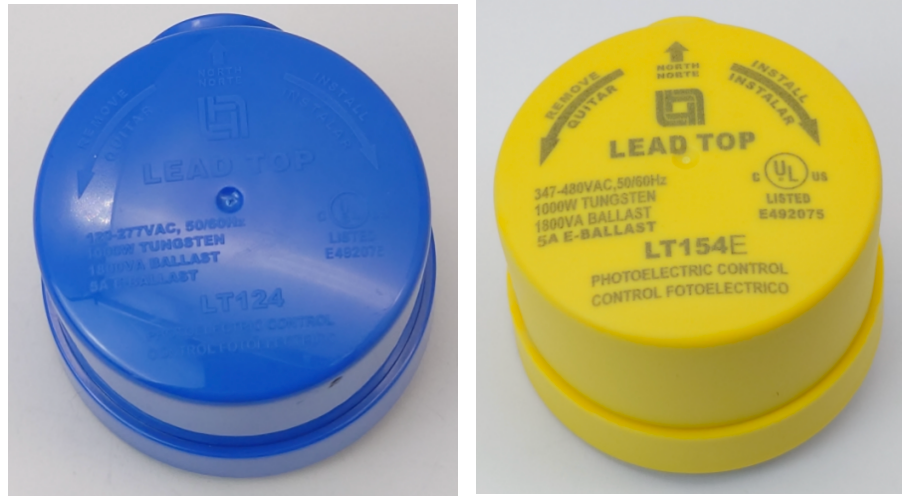Meta Descrição
Explore the working principle and process of photocells through an elaborative video to understand how they help in energy conservation by automating lighting systems.
Introdução
Photocell products automatically adjust the light switch based on the intensity of natural light and are widely used in outdoor lighting units, reducing manual interference, and significantly lowering long-term maintenance costs and energy consumption. They help in ensuring that the lights are on only when needed and the power wastage is minimized while also guaranteeing safety by automatically turning on lights when it starts getting dark.
Working Principle of photocell sensor
Photocells, also known as “dusk-to-dawn sensors,” are designed to respond to changes in ambient light levels, making them ideal for outdoor lighting systems that need to adjust without any human interference.
As dusk settles and the natural light gradually fades, the photocell detects the decrease in light and automatically switches on the lighting system, so that the area remains well-lit, even as the evening grows.
When it’s time dawn, natural light begins to increase and the photocell senses the change and turns the lights off, to prevent needless energy consumption. This flawless process not only reduces the need for manual operation but also ensures that lights are only on when they’re truly needed, helping conserve energy and reduce costs.
Video Overview
We have prepared an explanatory video to help you better understand the working principle of photocells. In this video, you will see the entire process of detecting strong light levels to the process of automatic switching of the lighting system, giving you a clearer, understanding of how photocells work.

Applications of photo controls
Photocells are widely used in various outdoor lighting scenarios, including public lighting, smart street lighting, residential lighting, smart homes, and smart cities. Specific applications include:
City Streetlamps:
Photo controls are efficient in optimizing energy consumption in modern cities or urban environments. By automatically switching on the street lights at dusk and turning them off at dawn, they noticeably reduce energy consumption and contribute to a relatively sustainable urban landscape.
Building Exterior Lighting:
Photocontrols efficiently manage the operation of architectural lighting, holiday decorative lights, garden lights, porch lights, and billboards. They ensure that the lighting is automatically activated only at dusk and turned off at dawn, preventing unnecessary energy waste and significantly reducing energy consumption.
Parking Area Lighting:
Photocells play a crucial role in parking areas by turning on the lights in advance when the ambient light is low, thus expanding the driver’s visibility and helping to identify potential risks early. Relying solely on car lights or waiting for a vehicle to approach before turning on the lights is insufficient, as many areas may remain unlit. If another driver walks out toward the exit, there could be a safety hazard due to insufficient light. Photocells automatically adjust the lighting, ensuring the parking lot remains sufficiently illuminated at all times, effectively reducing potential safety risks.
Residential Applications:
Photocells can be widely installed in residential settings to automate outdoor lighting and smart home control. They are suitable for areas such as porch lights, garden lights, public area landscape lights, and floodlights. Not only do they enhance the convenience of daily life for residents, but they also improve safety during nighttime entry and exit. By automatically controlling the switching on and off of the lighting system, photocells effectively reduce the occurrence of criminal activities, especially at night, by providing necessary illumination to improve visibility and thereby lowering the risk of theft. Additionally, they help save energy and optimize the energy consumption of homes and communities.
Advantages of Photo controls
Energy Efficiency:
By intervening in the daily energy consumption and optimizing unnecessary lighting, photo controls significantly reduce energy consumption for both residential and commercial usage. This automatically leads to cost-cutting for the users.
Automated Operations:
Photo controls have no need for manual operation, reducing the risk of human error as well as streamlining the operations. Moreover, wen the human element is omitted and replaced by automation, energy efficiency is guaranteed, leading to saving resources and enhancing convenience.
Extended Life Span of Equipment:
Photo controls minimize the frequency of lighting cycles, and reduce the wear and tear on lighting fixtures which leads to a longer service life and reduces the maintenance cost. Moreover, since these photocell units do not have any moving parts, they tend to last longer due to minimal wear and hence contribute to long-term cost savings.
Enhanced Sustainability:
Photo controls are a source of restricting energy consumption and reducing light pollution. In smart city lighting, they are contributing to a significantly more sustainable and environment-friendly future.
Improved Safety:
In applications such as street lighting and parking lots, photo controls play an effective role in enhancing vehicle safety. They ensure adequate illumination during the night hours and minimize energy consumption during the daylight.
Whether it’s for outdoor street lighting systems that need to be installed by lighting companies or retail-friendly residential photocell products, we’ve curated a selection of popular items for your reference:
- Outdoor Street Lighting Photocell Products: LT124, LT124L
- Residential Photocell Products for Platforms like Amazon, eBay, Express, etc.: LT310, LT520
- Photocell Products for the European Market with Zhaga Book 18 Connector
- Customizable Products Available
Conclusão
Photo controls play a vital role in lighting technology, they are not following typical traditional manual control but instead moving towards a more intelligent and sustainable approach. By using automation, photo controls are not only optimizing energy consumption but also contributing to an environment-friendly future. It is also reducing the risk of human errors.
The ability to seamlessly integrate photo controls into diverse applications, from urban infrastructure like streetlights to residential settings, highlights their versatility and adaptability. This technology plays an important role in creating a more sustainable and interconnected world where lighting systems are not only functional but also contribute to a greener and more efficient future. As technology continues to evolve, we can expect even more sophisticated photo control systems that offer enhanced functionality, improved energy efficiency, and seamless integration with other smart ho
me technologies
Additional Resources
- [Photocontrol IP66 Waterproof Test Video Link]
- [480V Photocontrol Voltage Test Video Link]
- [Zhaga Cover Base + Zhaga Socket IP66 Waterproof Test Video Link]
Referências
- https://leaditop.com/product-2/
- https://leaditop.com/product-2/lighting-controller-solution/
- https://www.sciencedirect.com/topics/engineering/photocell#:~:text=Photocell-,A%20photocell%20is%20a%20resistor%20that%20changes%20resistance%20depending%20on,to%20flow%2C%20decreasing%20the%20resistance.
- https://www.eesi.org/topics/energy-efficiency/description#:~:text=Energy%20efficiency%20simply%20means%20using,household%20and%20economy%2Dwide%20level.






